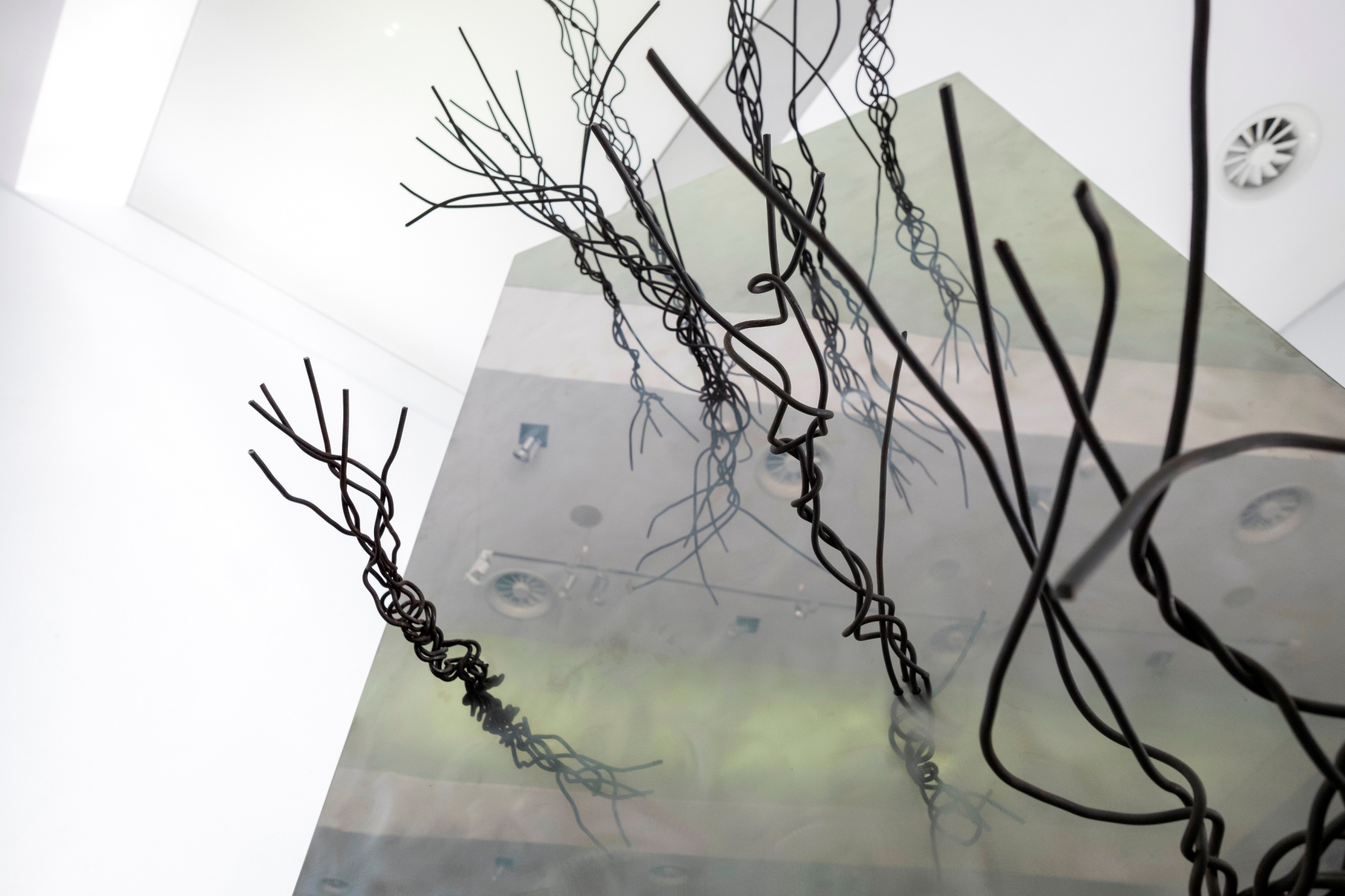Land has responded
19.04.2018

An art exhibition "The Land as / not / a Subject" was held at the end of September 2017, it was a part of the "Land Responds" project. In December, this exhibition was also presented at the Parliament of Ukraine.
The project was created in an unusual format that combines foresight-study of the future and expression by artists the voice of a new entity, the land, sounded in the debate about the fate of the land reform in Ukraine. The project offers possible ways for the development of the agro sphere, fixes related problems and manifests the greatest conflicts.
The "Land responds" was based on the hypothesis that economic
and socio-political problems around the “land issue” were the result of a
certain deep cause - in the context of human-land relations. These
relationships were explored by artists in the project.
In the world of art, the image of the land appears in
many contexts but does not exhaust itself. The land is like the space, like
mother and guardian, like the subject of political manipulation, like social
background, territory, and so on.
The project's artists act as mediators, who, thanks to the research and analytical potential of contemporary art practices, are able to "hear" the voice of the land and include it in a dialogue in all its diversity and completeness of shades - with the help of the language of art.
Curators and art expertise - Ksenia Malykh, Olga Balashova. Art management - Yulia Gnat (s.com.ua).
The project collected artists of different age groups,
different art strategies and geography, so each of them, after penetrating into
the subject, chose a perspective that is adequate to his/her own art practice.
Such artists as: Yehor Antsyhin, Tereza and Mykhaylo Barabash, Vera Ganzha, Kseniya Gnylytska, Artem Volokitin and Tatyana Malinovskaya, Mykyta and Iegor Zigura, Konstantin Zorkin, Anna Kakhiani, Alevtina Kakhidze, Bogdan Andriitsev, Serhiy Yakunin participated in a visual part of the project.
Anna Kakhiani in her work explores the limits of our perception of the immense essence of the land. Moreover, the convention of this limit is the main motive of work.

("Untitled" by Anna Kakhiani)
Instead, Vera Ganzha subjectivizes, through empathy, the land as an organism, which, like a person, has an instinct for self-preservation and, despite external factors, seeks to complete its full life cycle.


("I am looking at the earth" by Vera Ganzha)
Alevtina Kakhidze "introduces" to the artistic discussion about the status of land an additional subject - living organisms that inhabit the land in one way or another, raising their question of their involvement in the land issue and the responsibility for this involvement.

("Flytraps and other insects go to vote" by Alevtina Kakhidze)
Yehor Antsyhin, immitating feministic rhetoric, reflects on the topic of conscientious, objectivistic attitude of the man to the land and its resources. Antsyhin’s land is becoming emancipated.


("44% of attractiveness" by Yehor Antsyhin)
Artem Volokitin and Tatyana Malinovskaya, in their paintings, ironic over the high degree of fervor in the rhetoric of politicians regarding the land issue. Moreover, they warn because fervor often becomes only a cover.

("The Land issue" by Artem Volokitin, Tatyana Malinovskaya)
"Live throne does not need a King" by Konstantin Zorkin is a generalized image of the land from ancient myths, its main purpose is to cause fear. The voice of the land in the work of Zorkin warns those who believe that the land - is just a resource.


("Live throne does not need a King" by Konstantin Zorkin)
Bogdan Andriitsev also addresses the theme of the ancient pre-scientific knowledge in the work "The Cossack sorcerer ploughs the deepest". In the form of a Cossack Kharakternyk, whose function in the Zaporizka Sich was to establish communication between Cossacks and furies, the artist sees himself and reflects on his own role in this project.

("Kharakternyk ploughs the deepest" by Bogdan Andriitsev)
Mykyta and Iegor Zigura tried to look into the relatively near future (2032) and predict what the composition of the soil would be if the attitude to land resources would be as irresponsible or if the attitude of the person would remain unilateral - "I know what is useful for the land".


("Soil sample" by Mykyta Zigura, feat. Iegor Zigura)
After investigating the positions of various disputants over the land issue of the parties, Tereza and Mykhaylo Barabash focused on the antinomies and paradoxes that arise in the relationship between the man and the land.


("Antinomy" by Tereza and Mykhaylo Barabash)
Ksenia Gnylytska is investigating populism, manipulations related to the land issues. The artist, in the form of a certain protest, deliberately devaluates the abstractness in the relationship between human and the land, to which populists always urge, while use such image like "Mother Land", and addresses the straightforward and rational specification of the "problems" figures. In the form of campaign leaflets, Gnylytska copies her graphic works, it is her only "lyrical retreat" to the abstractness - "language of the land", which the artist allows herself in her work.


("In search of roots" by Ksenia Gnylytska)
Artem Loik, a poet and rap singer, also asks the same question - how can we expose and neutralize populism? One of his options is to reinforce to the absurd the idea it is fed on.
Serhiy Yakunin and his "Expositio" completed the exposition. The artist demonstrates the character of human relations and the land in absolute measure. The swiftness of the life of an object in space is identical to human life from the point of view of the earth, which existed long before the appearance of the man, and, probably, will exist even after us.

("Expositio" by Serhiy Yakunin)
Detailed information about the artworks can be found on the project website (in Ukrainian).
(Photo - Kostyantyn Strilets)
